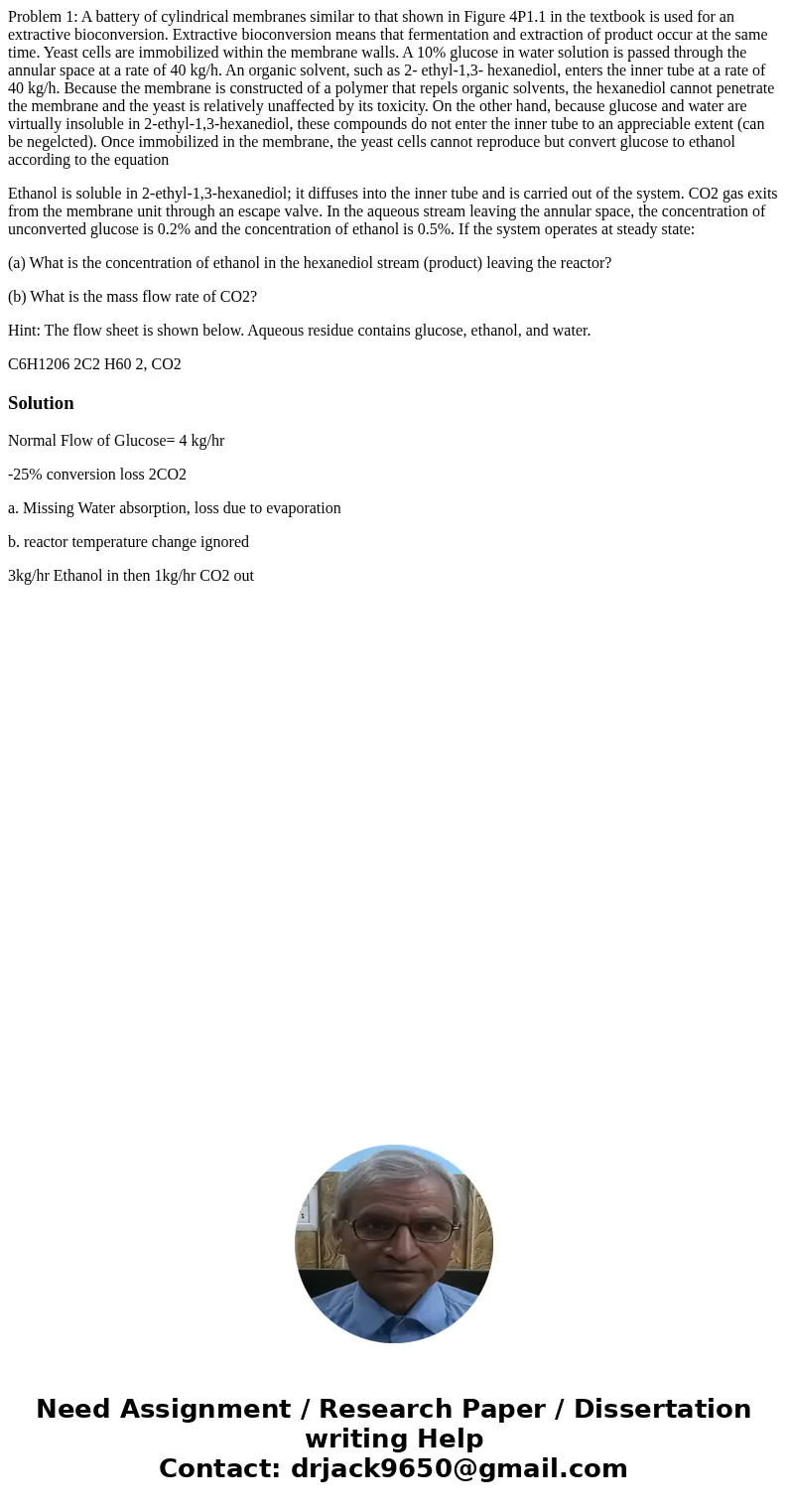Problem 1 A battery of cylindrical membranes similar to that
Problem 1: A battery of cylindrical membranes similar to that shown in Figure 4P1.1 in the textbook is used for an extractive bioconversion. Extractive bioconversion means that fermentation and extraction of product occur at the same time. Yeast cells are immobilized within the membrane walls. A 10% glucose in water solution is passed through the annular space at a rate of 40 kg/h. An organic solvent, such as 2- ethyl-1,3- hexanediol, enters the inner tube at a rate of 40 kg/h. Because the membrane is constructed of a polymer that repels organic solvents, the hexanediol cannot penetrate the membrane and the yeast is relatively unaffected by its toxicity. On the other hand, because glucose and water are virtually insoluble in 2-ethyl-1,3-hexanediol, these compounds do not enter the inner tube to an appreciable extent (can be negelcted). Once immobilized in the membrane, the yeast cells cannot reproduce but convert glucose to ethanol according to the equation
Ethanol is soluble in 2-ethyl-1,3-hexanediol; it diffuses into the inner tube and is carried out of the system. CO2 gas exits from the membrane unit through an escape valve. In the aqueous stream leaving the annular space, the concentration of unconverted glucose is 0.2% and the concentration of ethanol is 0.5%. If the system operates at steady state:
(a) What is the concentration of ethanol in the hexanediol stream (product) leaving the reactor?
(b) What is the mass flow rate of CO2?
Hint: The flow sheet is shown below. Aqueous residue contains glucose, ethanol, and water.
C6H1206 2C2 H60 2, CO2Solution
Normal Flow of Glucose= 4 kg/hr
-25% conversion loss 2CO2
a. Missing Water absorption, loss due to evaporation
b. reactor temperature change ignored
3kg/hr Ethanol in then 1kg/hr CO2 out

 Homework Sourse
Homework Sourse